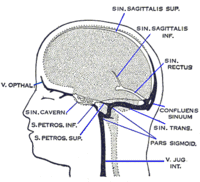
Dissection of the Petrosal Presigmoid-Retrolabyrinthine Approach for the Petroclival Region on a Cadaver: 2-Dimensional Operative Video.
Sign Up to like & getrecommendations! Published in 2020 at "Operative neurosurgery"
DOI: 10.1093/ons/opaa117
Abstract: Skull base epidermoid tumors, meningiomas, and schwannomas can be accessed by different techniques depending on the location and size of the lesion. Small lesions located anterior to the internal acoustic meatus (IAM) can be accessed… read more here.
Keywords: petrosal; dissection; approach; lesions located ... See more keywords

Combined Petrosal Approach for Resection of a Large Trigeminal Schwannoma With Meckel's Cave Involvement-Part I: Anatomic Rationale and Analysis: 2-Dimensional Operative Video.
Sign Up to like & getrecommendations! Published in 2020 at "Operative neurosurgery"
DOI: 10.1093/ons/opaa363
Abstract: Resection of large trigeminal schwannomas involving both posterior and middle cranial fossae is challenging. The depth of the surgical target in the superomedial corner of the cerebellopontine angle and the petrous apex makes for a… read more here.
Keywords: resection large; large trigeminal; petrosal approach; approach ... See more keywords

Petrosal Approach for Giant Retrochiasmatic Craniopharyngioma: 2-Dimensional Operative Video.
Sign Up to like & getrecommendations! Published in 2021 at "Operative neurosurgery"
DOI: 10.1093/ons/opab045
Abstract: Microsurgical resection of craniopharyngiomas poses significant challenges, which are amplified with tumors in the retrochiasmatic location and larger size. Traditional pterional trans-sylvian, subfrontal translamia terminalis, or interhemispheric approaches provide narrow surgical corridors with obstructed visualization… read more here.
Keywords: video; retrochiasmatic craniopharyngioma; approach; petrosal approach ... See more keywords

Pediatric Pontine Cavernous Malformations: The Presigmoid, Posterior Petrosal Approach.
Sign Up to like & getrecommendations! Published in 2018 at "Operative neurosurgery"
DOI: 10.1093/ons/opy007
Abstract: BACKGROUND Brainstem cavernous malformations (cavernomas) in children have a high risk of hemorrhage and neurological deterioration. This risk is magnified if the child has a genetic predisposition for cavernoma formation. The surgical management is challenging… read more here.
Keywords: posterior petrosal; cavernous malformations; approach; petrosal approach ... See more keywords

Anterior petrosal approach for petroclival solitary plasmacytoma
Sign Up to like & getrecommendations! Published in 2022 at "Surgical Neurology International"
DOI: 10.25259/sni_325_2022
Abstract: Background: Primary solitary plasmacytoma (PSP) of the skull base is a rare localized monoclonal plasma cell dyscrasia with normal or low plasma cell infiltration. Differentiating from other skull base tumors based on radiologic findings is… read more here.
Keywords: anterior petrosal; resection; solitary plasmacytoma; petrosal approach ... See more keywords

Endoscopic transmastoid posterior petrosal approach for locally aggressive tumors in the petrous part of the temporal bone involving the internal auditory canal, jugular foramen, and hypoglossal canal.
Sign Up to like & getrecommendations! Published in 2019 at "Journal of neurosurgery"
DOI: 10.3171/2019.5.jns19187
Abstract: OBJECTIVE The posterior petrosal approach is an established surgical method offering wide access to skull base lesions through mastoid air cells. The authors describe their experience with the endoscopic transmastoid "posterior petrosal" approach (EPPAP) for… read more here.
Keywords: skull base; posterior petrosal; petrosal approach; hypoglossal canal ... See more keywords